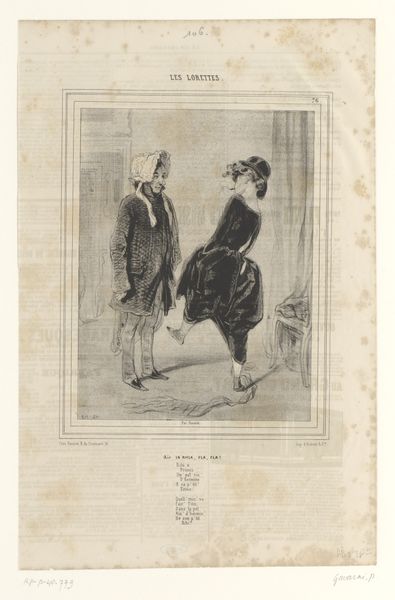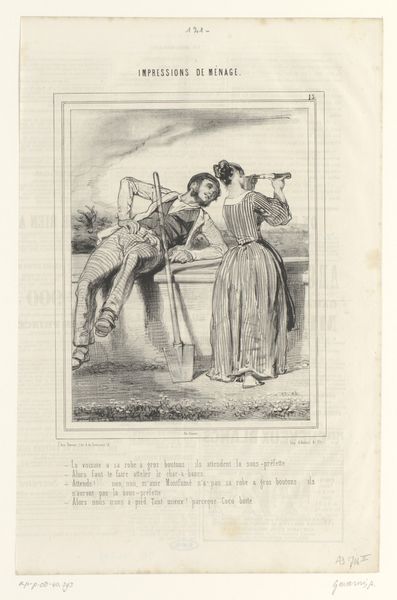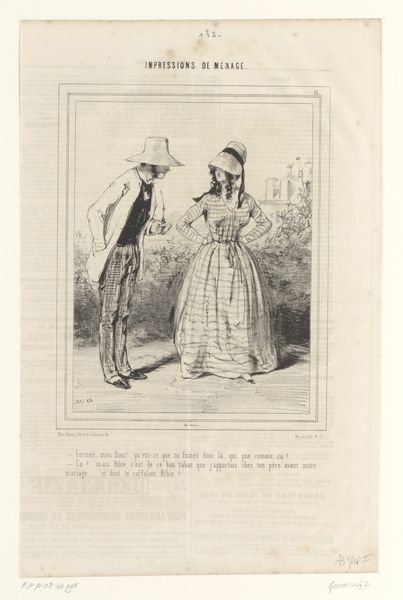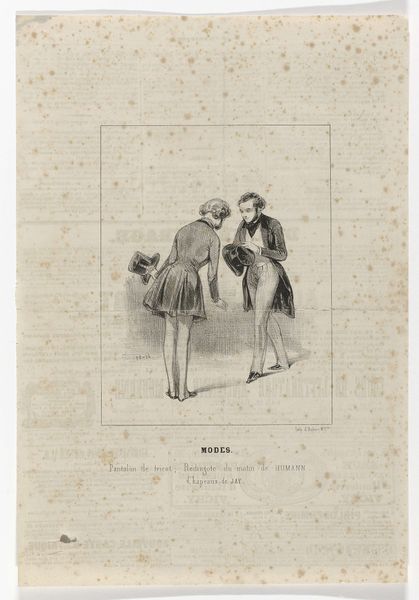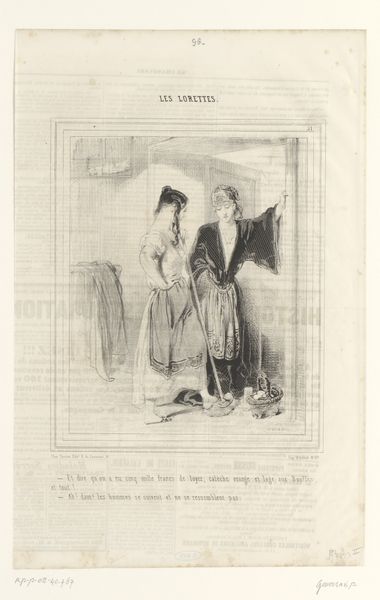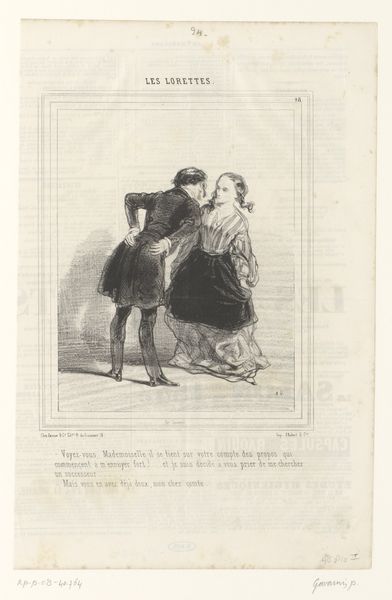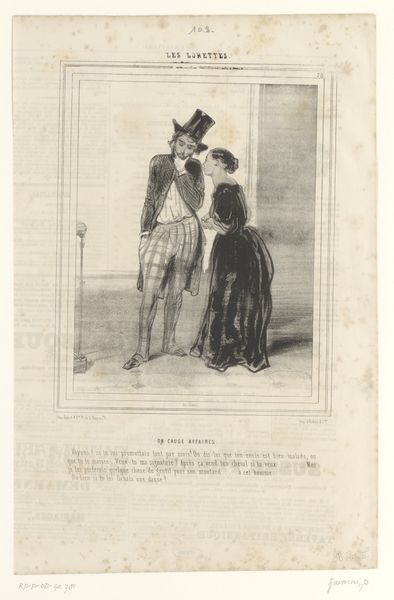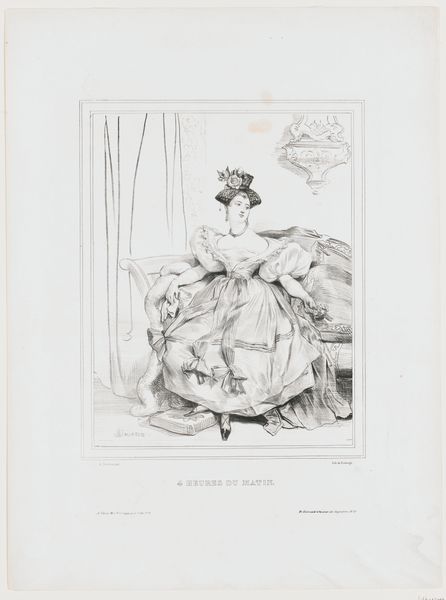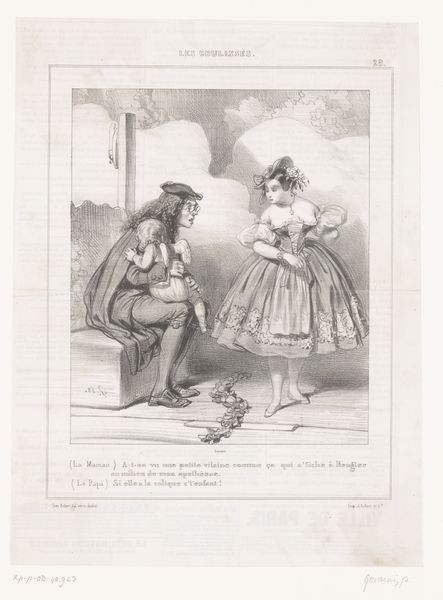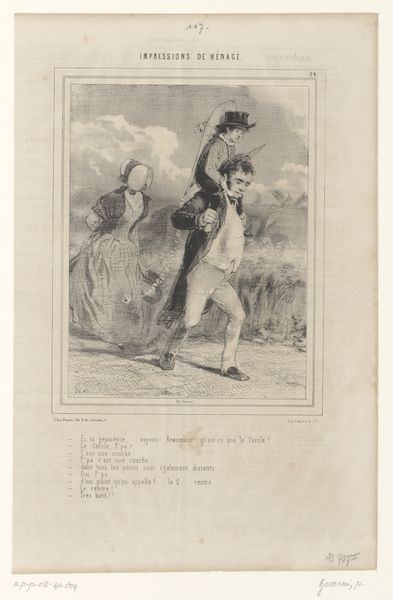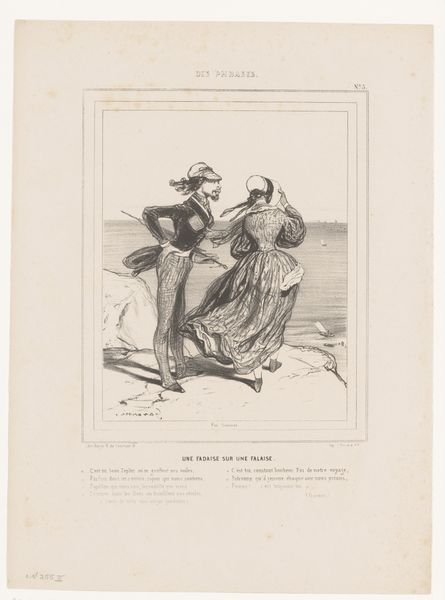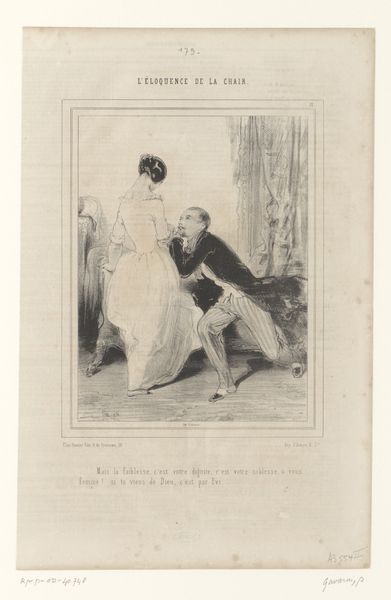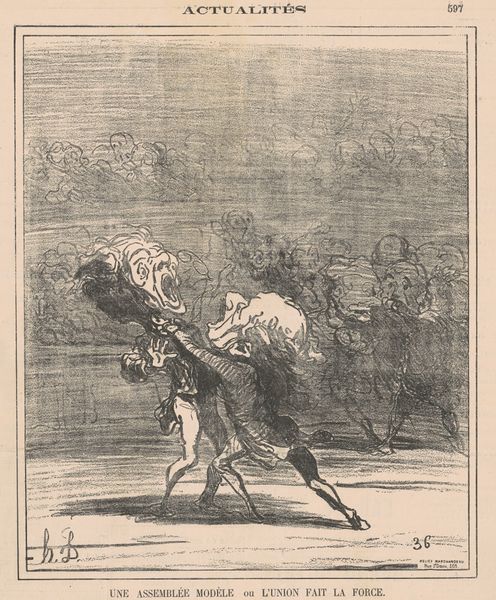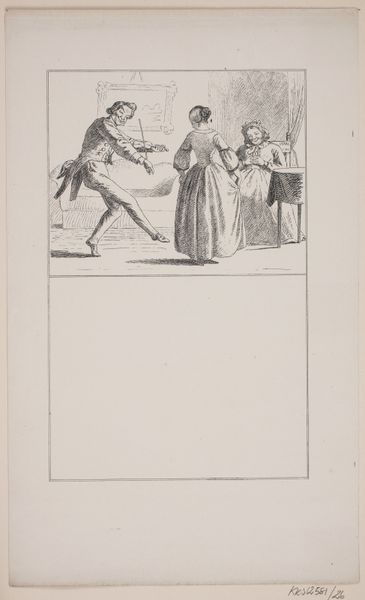
drawing, pen
#
portrait
#
pencil drawn
#
drawing
#
aged paper
#
light pencil work
#
pencil sketch
#
old engraving style
#
personal sketchbook
#
idea generation sketch
#
old-timey
#
romanticism
#
sketchbook drawing
#
pen
#
pencil work
#
genre-painting
Dimensions: height 362 mm, width 237 mm
Copyright: Rijks Museum: Open Domain
Curator: Here we have "Man bekijkt vrouw in een windvlaag", or "Man Looks at Woman in a Gust of Wind," a pen and pencil drawing made around 1843 by Paul Gavarni, currently residing in the Rijksmuseum. It's an interesting piece, seemingly captured mid-moment. Editor: Yes, "mid-moment" is right! I see it as this very brief encounter on aged paper. The rapid pen strokes create a light sketch feel, almost fleeting, like the wind itself. A bit old-timey, too, which the material clearly conveys. Curator: Let's consider the social dynamics at play here. Gavarni often depicted contemporary Parisian life. This drawing is a prime example, hinting at the interactions between men and women, and the nuances of societal roles. Editor: I agree. The wind— the "gust of wind," the very event of the work— becomes a symbol here. It disrupts, revealing more than is usually seen, both literally, perhaps of the woman's form, and metaphorically of societal interactions. It seems almost allegorical, the man representing societal gaze, while the woman, ruffled, embodies societal expectations. Curator: Or it can be taken quite literally as a piece illustrating fashion in this epoch! What kind of fabrics they favored to shield themselves from these windvlagen? And how a simple wind vlaag might disrupt their composure... Editor: But isn’t that just it? The drawing feels larger than its mere subject. We read into these encounters certain things – like composure being upended. A whirlwind in miniature that has both physical and psychological effects, a visible representation of something far less visible: power structures in Parisian life at the time, made raw via the disruptive wind and the resulting scene it causes to take place in the foreground. Curator: Point taken. Considering its function as an idea generation sketch, as suggested by the tag, maybe the drawing offers glimpses of potential characters and events for future developed and bigger works. A test for visualizing interactions perhaps! Editor: Possibly! To my eye, beyond its technical creation and its initial conception lies an artwork dense with emotional charge— that is easily seen across history to contemporary times. The work as such really becomes more potent when looked through our present-day societal awarenesses! Curator: An interesting viewpoint—the materials almost vanish into insignificance and become less potent next to what is signified and interpreted... A valuable consideration. Editor: Thank you!
Comments
No comments
Be the first to comment and join the conversation on the ultimate creative platform.
